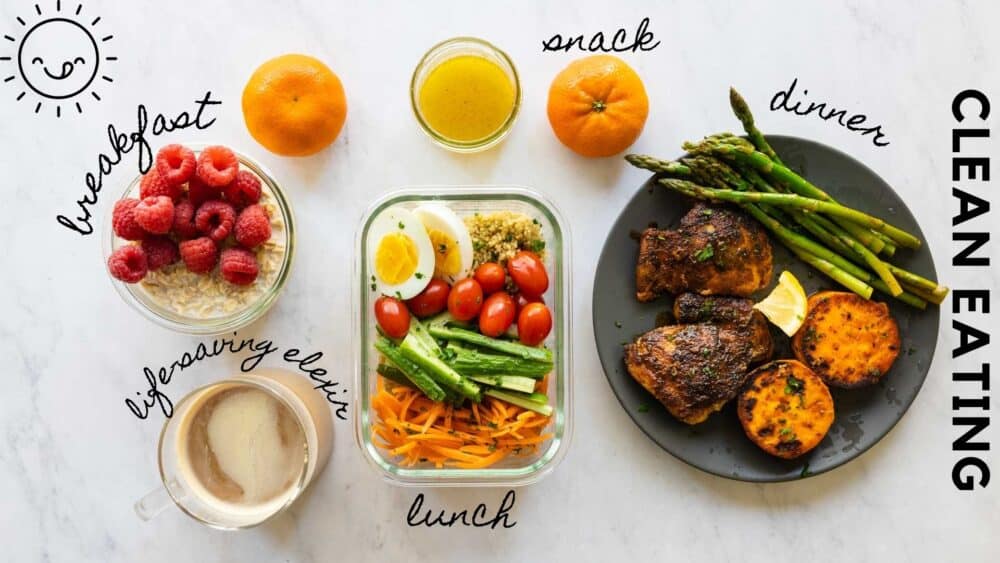For those new to the concept, here’s our beginners guide to clean eating.
What is Clean Eating?
Clean eating is eating whole foods in their most natural form.
Clean eating encourages the consumption of fruit, vegetables, natural sources of protein and healthy fats. What’s discouraged is eating processed foods, particularly those with high levels of added sugar and sodium (salt), and additives.
Proponents of clean eating say that it’s not a diet, but a life styles centred on simplifying your diet.
How to Eat Clean
One of the great things about clean eating is that it is very simple, and the principles of clean eating are the ones that dietitians have been promoting for as long as you can remember.
Here are the keys to eating clean:
- Eating seasonal and locally sourced plant based foods (fruit and vegetables) should form the bulk of your diet
- Eat lean sources of protein, ideally from humanely and locally farmed sources, like free range eggs
- Eat complex carbohydrates from whole grain sources
- Avoid processed foods wherever possible, particularly white foods (made using white flour, white sugar and added salt), with high levels of added sugar and salt
- Read food labels and choose foods with as few ingredients in the ingredients list as possible
- Drink water instead of fruit juices and soft drink
- Use healthy cooking methods to prepare your meals, like grilling, stir frying or steaming instead of deep frying
- Keep alcohol consumption down as much as possible
- Eat as many home cooked meals as possible each week at the expense of take away
- Shop the perimeter of the supermarket only (all the processed foods tend to be in the middle of the store)
- Choose organically grown food if and when possible
Some supporters of clean eating also suggest grazing throughout the day by consuming five to six times per day, with three main meals and two healthy snakes per day.
Clean Eating Recipes
One of the most important principles of clean eating is to make foods yourself from scratch whenever possible. This ensures that you control what goes into your meals, that additives can be kept to a minimum and that you can choose the healthiest cooking methods.
The recipes we’ve listed here follow some of the more significant principles of clean eating, like eating seasonal vegetables, lean sources of protein, whole grains and healthy cooking methods:
Clean eating for beginners
- Clean Eating does NOT have to be complicated. Simple whole food recipes with everyday ingredients available at any grocery store, and no more than 1 hour of standing in the kitchen for the whole day.



Comments
Post a Comment